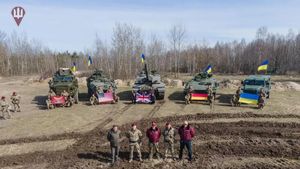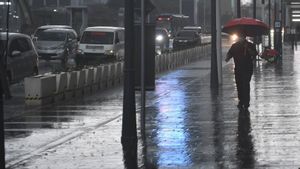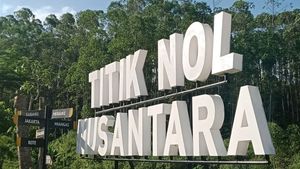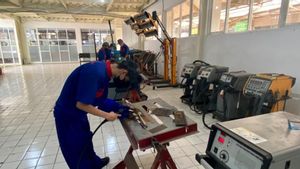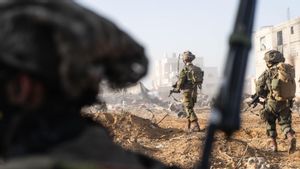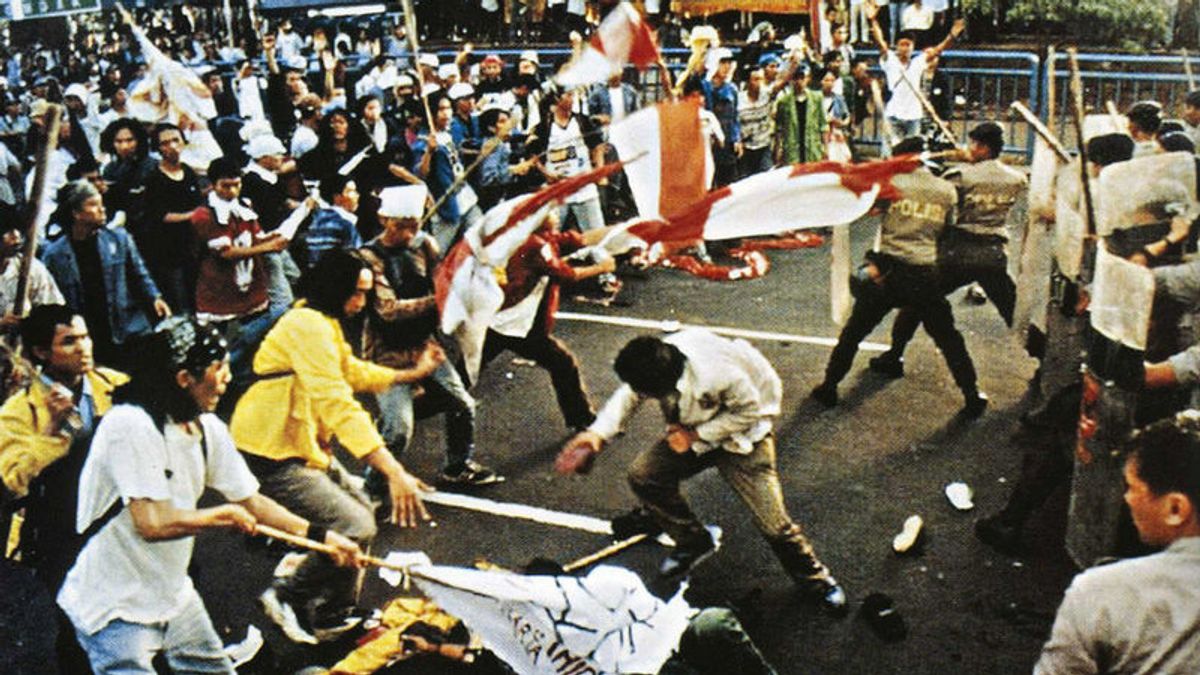
JAKARTA - Today, May 12, 1998, exactly 23 years ago four Trisakti students were shot dead on campus during a protest against Suharto's government. This portrait of the cruelty of the apparatus to students known as the Trisakti Tragedy is in the international spotlight. The tragedy of Trisakti became a symbol and marker of student resistance against the New Order (Orba) government.
Since the beginning of March 1998, all students and pro-democracy elements have taken to the streets. The action aims to demand reform. The cause is because the Orba government often shows the practice of corruption, collusion, and nepotism (KKN). As a result, the People of Indonesia became victims of the monetary crisis.
All student actions spilled into the street including the academic community of Trisakti University. In fact, at that time, Trisakti was not a campus that took into account its track record in the national demonstration map. The Times (London) foreign correspondent Richard Lloyd Parry believes that. Perry thinks that since the beginning of March, almost no major media in the capital have recorded trisakti's presence. Moreover, Trisakti at that time famous campus the bourgeoisie.
"Trisakti University is on the road to the airport; this was the first time I had heard the name, and previously no one in Indonesia had paid great attention to it. Gadjah Mada University in Yogyakarta and The University of Indonesia in Jakarta: they are the campuses of activists, the 'top' universities. Trisakti is a private university, therefore expensive, and secular, without the focus of religious identity such as Islamic campuses," said Richard Lloyd Parry in Zaman Edan: Indonesia on the Brink of Chaos (2008).
"His students were the children of government officials, businessmen, and style-conscious military officials, almost none of whom viewed them as heroes and martyrs. Trisakti University is a place for stylish models. But there was nothing more stylish in Indonesia at the time than protest," Parry said.
chronology
It may be that Trisakti students missed the news. In fact, they have repeatedly taken action to demand Suharto step down, including on May 12. Melansir Kompas action was followed by students, lecturers, employees, and alumni of Trisakti University from 11:00 WIB in the campus parking lot. Initially the action took place peacefully with the action agenda of hearing the oration of the Great General A.H. Nasition.
The absence of A.H. Nasution, made the action pulpit filled by orations from professors, lecturers, and trisakti students in various forms. After 13:00, the participants exited the campus to Jalan S Parman, Grogol and headed to the MPR /DPR Senayan building. Those at the front were the students who brought roses and handed them out to the police. Similarly, the student leaders of the alumni and security officials made a peace deal that could only move until in front of the West Jakarta Mayor's Office.
The agreement made the students unable to continue the journey. Afterwards, the students then held a free pulpit. Until 17:00 WIB, the peaceful action went quietly without tension between students and security forces. In fact, the students and officials seemed to be joking. They share drinking water. They also took pictures together. Until finally the agreed action is ended.
The group of students then tried to disperse. However, the dissolution was slow due to the very small entrance of the campus. When incoming students have reached 70 percent. Suddenly from the back there was an explosion of weapons from the security forces. Students immediately ran in all directions. Some who didn't get a chance to run were beaten by officers.
Students don't stay silent. They fought back by throwing stones at the officers. The resistance was countered by security forces by releasing tear gas and firing on students who had been inside the village. Four Trisakti students died and dozens more were injured.
"On May 12, there was a tragedy trisakti, which killed four students reform fighters, who were blown by savage bullets, which in fact paid with public money," said Amien Rais in Our Attitude (1999).
It is recorded that the Trisakti Tragedy cost four lives whose name is eternal until now. They include Elang Mulia Lesmana (Faculty of Civil Engineering and Planning Department of Architecture), Hafidhin Royan (Faculty of Civil Engineering and Planning Department of Civil Engineering), Hery Hartanto (Faculty of Industrial Technology), and Hendriawan Sie (Faculty of Economics).
Who's responsible?
Trisakti's "bloody" tragedy later became one example of human rights violations in Indonesia. The guarantee of human rights violated is the guarantee of the right to life. Which, the guarantee of human rights is present in the 1945 Constitution Article 28A. The article reads another: Everyone has the right to live and has the right to defend his life and life.
Those involved include security forces ranging from members of the police and military / ABRI. They allegedly took away the life rights of Trisakti students by stepping on, beating, and shooting students brutally. The TNI commander at that time, WIranto still blamed certain "people", namely prabowo Subianto or Major General of TNI Muchdi Purwoprandjono.
"The event has been used to carry out a massive internal clean-up, officially called 'internal consolidation.' However, it turned out that the consolidation only removed some officers who were once considered close to Prabowo, while the mental attitude of ABRI soldiers who remained in office was not reformed. Wiranto, in particular, seemed unable to leave the old paradigm he learned as Suharto's aide," Marcus Mietzner wrote in his paper in Tempo Magazine (1998).
OTHER TODAY'S HISTORY
The English, Chinese, Japanese, Arabic, and French versions are automatically generated by the AI. So there may still be inaccuracies in translating, please always see Indonesian as our main language. (system supported by DigitalSiber.id)





